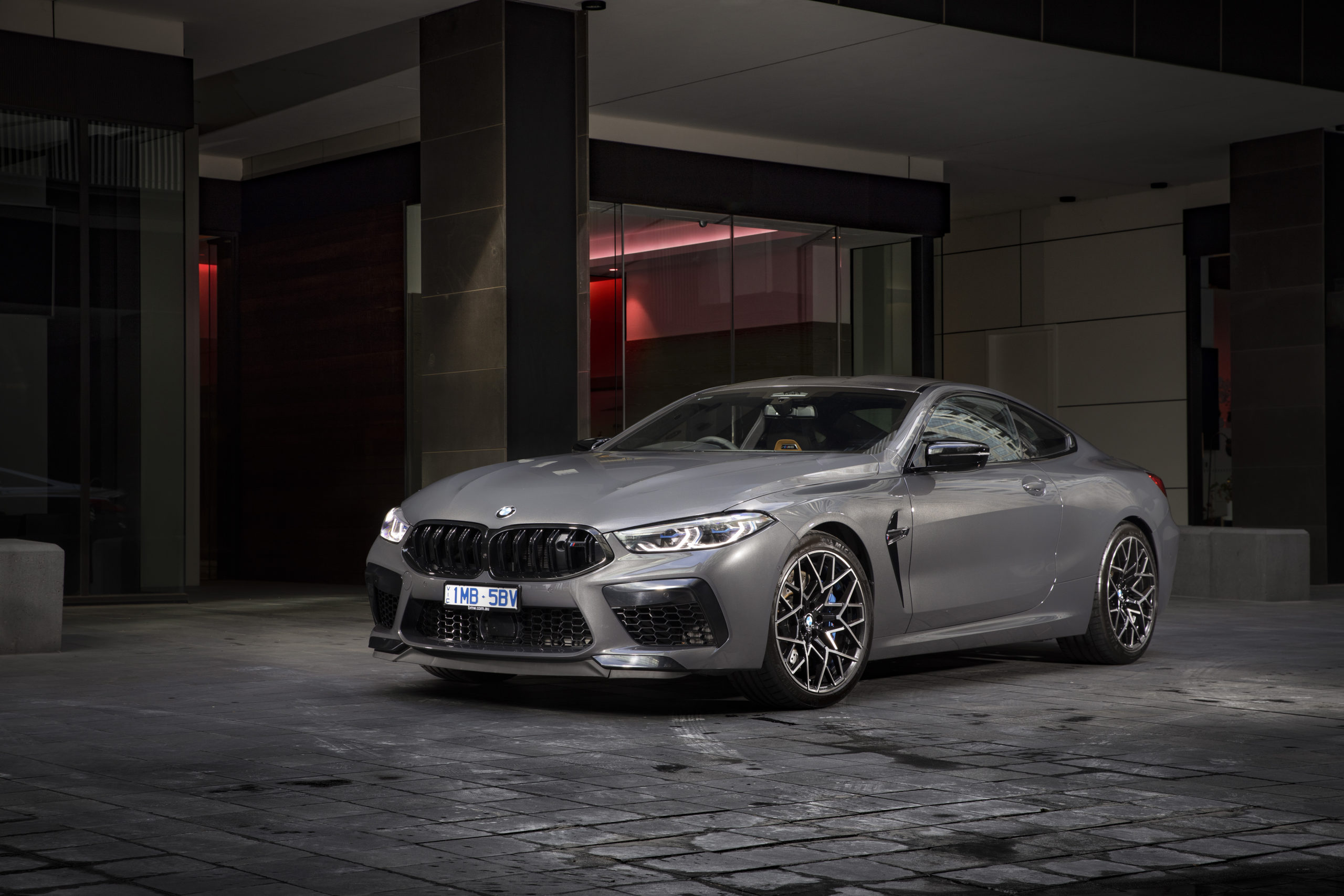
What is it?
This is the Bavarian brand’s attempt to take-on the biggest name in sports cars – the Porsche 911. BMW has not only revived the 8-Series badge (effectively replacing the 6-Series) but has added this flagship, a high-performance coupe from M Division.
While the M850i Coupe is a highly impressive grand tourer, the M8 Competition is (as its name implies) meant to be a red-hot sports car capable of taking on the likes of the 911, Audi R8, Aston Martin Vantage and Mercedes-AMG GT.
Does it have any racing pedigree?
The M8 was designed with the racetrack in mind, with BMW’s road car engineers working with their race division colleagues who were simultaneously developing the M8 GTE/GT-LM.
The pair share the same layout and engine, a 4.4-litre twin-turbo V8 that has been a staple of both BMW M Division’s most potent models as well as the M6 GT3 racer.
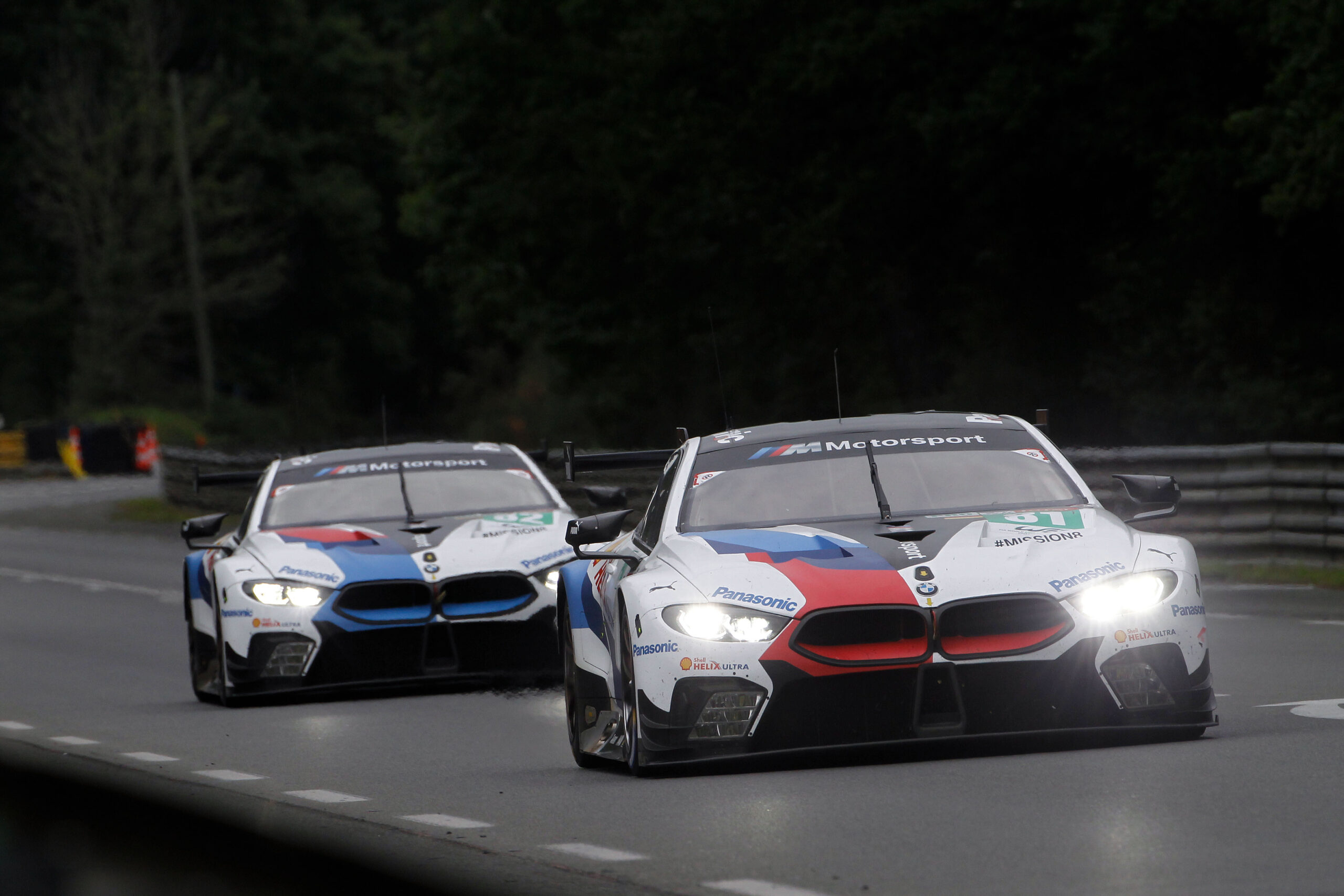
What’s under the bonnet?
As mentioned, the twin-turbo V8 has been part of the M Division arsenal since 2008, offering forced induction power for BMW’s bigger models – M5, X5M, X6M, etc.
It may not be brand-new but it has been steadily improved over the years and now makes a very healthy 460kW of power and 750Nm of torque in the M8 Competition. It’s paired with an eight-speed automatic transmission and BMW’s XDrive all-wheel drive system to help ensure maximum traction.
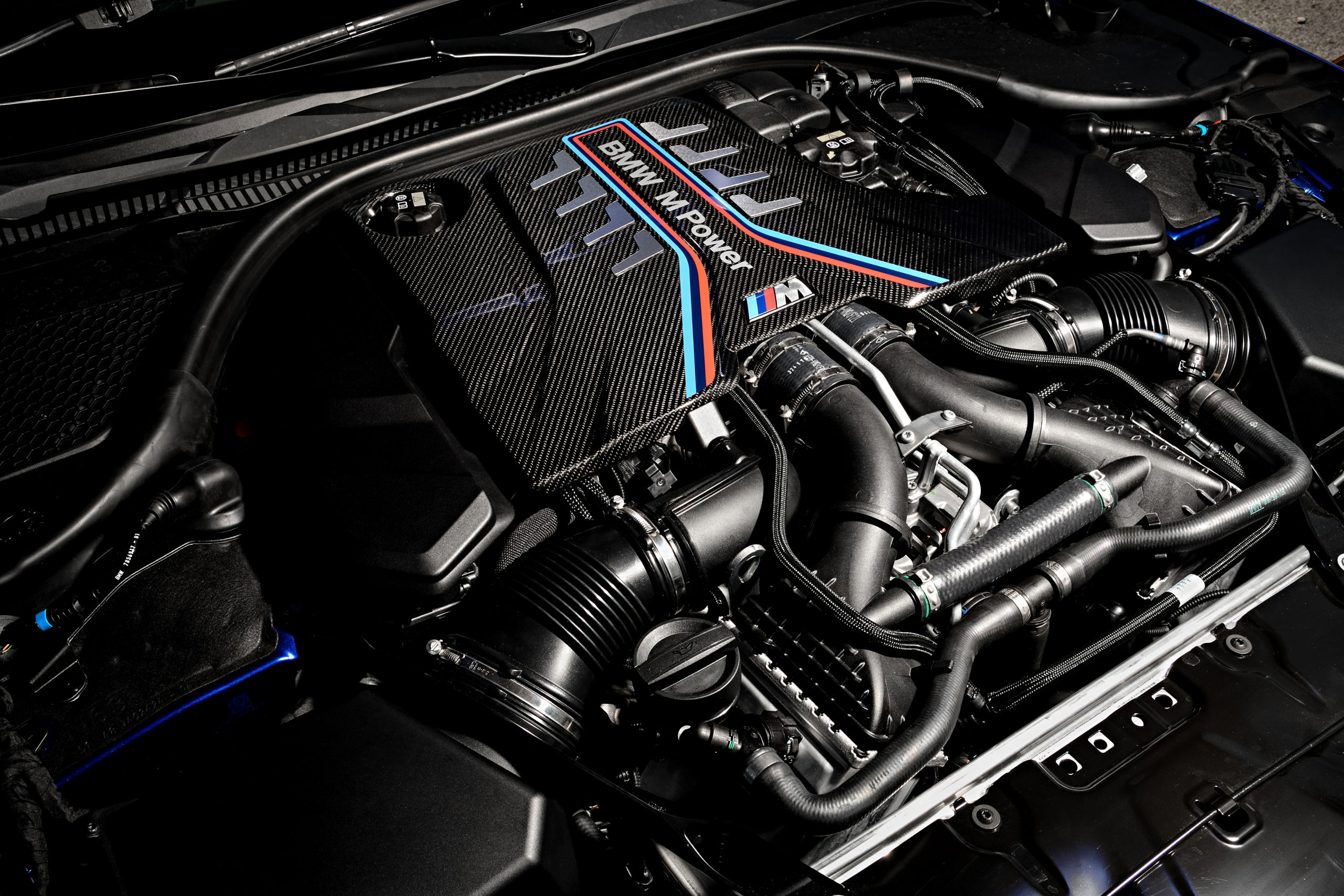
If that powertrain sounds familiar it’s because it’s the same set-up used in the M850i, so how different does it really feel? Well in the M850i the V8 is tuned to produce 390kW/750Nm which means it’s wickedly fast. In fact, when we tested the M850i last year we questioned how BMW was going to make the M8 feel any quicker.
We shouldn’t have worried, those extra 70kW certainly add some punch to the M8 to push it beyond grand tourer performance and into serious sports car territory. There’s so much grunt it never feels like it’s going to run out of steam, it just keeps building and building the longer you keep your foot buried.
But it also has no trouble just plodding around town, it may be tuned for high-performance but it’s not highly strung. It will handle daily chores as easily as it handles track work.
It also makes a nice noise too, despite the forced induction there’s a throaty V8 growl that accompanies hard acceleration – perfectly suited to a car of this kind.
How does it handle?
BMW claims that lessons learnt while developing the M8 GTE were transferred directly to the M8 Competition (BMW Australia isn’t offering the ‘standard’ M8 locally). Generally that feels like the kind of spin the marketing and PR department puts on things, but in the case of the Beemer it rings true.
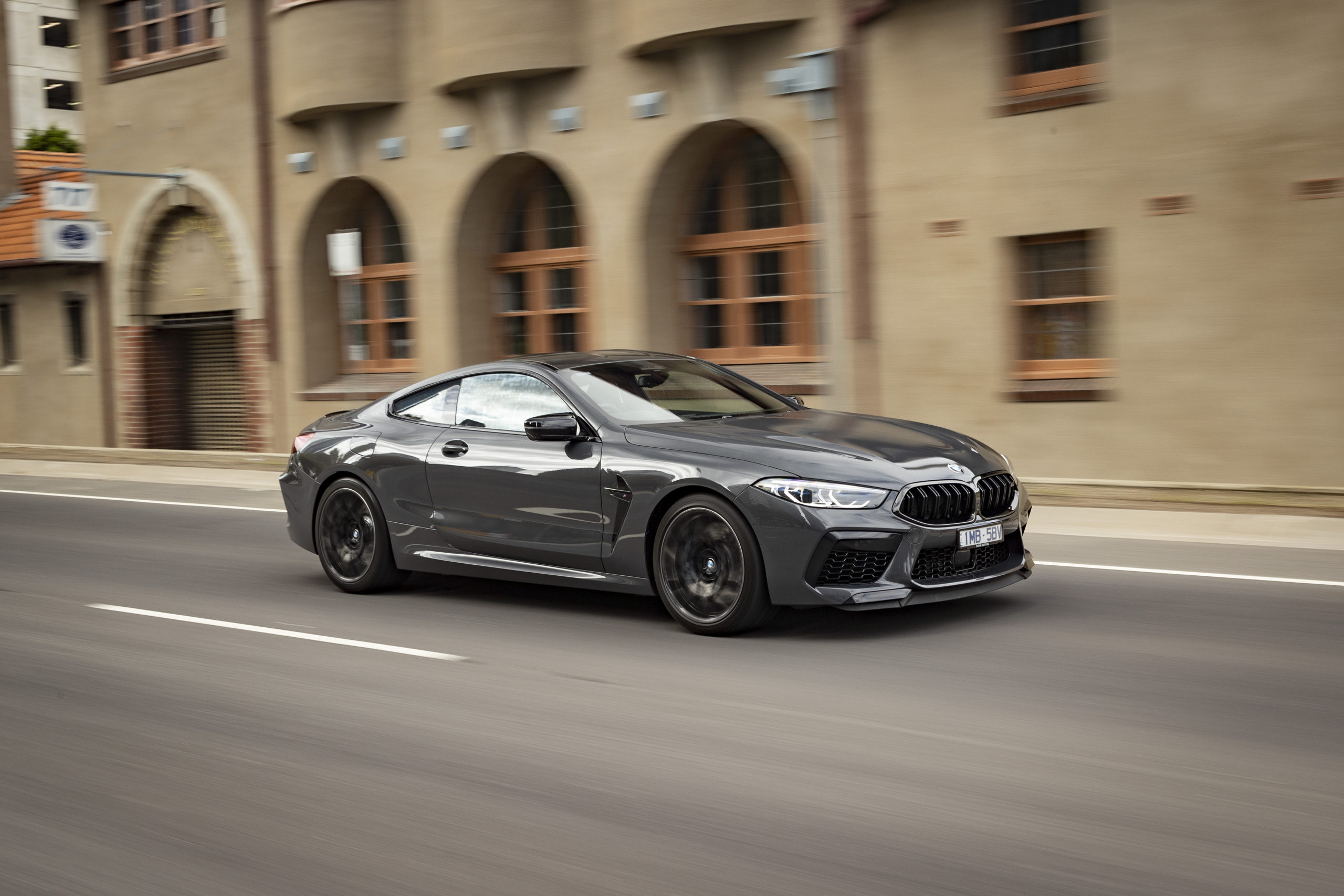
The M8 is a big car – 4.8m long and more than 2m wide – which suggests it will feel more like a grand tourer, which is to say less agile and more comfortable dynamically, but thanks to the way BMW’s M Division and race team have worked together that’s not the case.
Instead the M8 Competition feels far more agile and responsive than a car this size should. When you turn into a corner at speed for the first time there’s a genuine moment of surprise and delight as it responds with poise and precision you simply don’t expect from such a big coupe.
It’s a result of a combination of factors that BMW has integrated into the chassis, including the multi-mode all-wheel drive system (it has 4WD, 4WD Sport and 2WD modes), the Active M differential as well as the adaptive suspension.
One key difference between the M8 and the rest of the range is it uses more negative camber (-1.2 degrees) on the front wheels that has a direct impact on the front end grip and turn-in.
The XDrive system provides excellent traction too, which allows you to put all the power to the road with relative ease; plus the rear-wheel drive mode gives you the freedom to slide the back end around if you feel like it.
The ride comfort of the M8 is surprising in the Road setting, offering reasonable levels of compliance for a finely-tuned sports coupe riding on 20-inch alloys. The Sport and Track settings obviously tighten the dampers up but in typical BMW fashion they’re frankly too stiff for anything less than a smooth road or track; Australia’s pockmarked roads are obviously unfamiliar to the BMW suspension boffins.
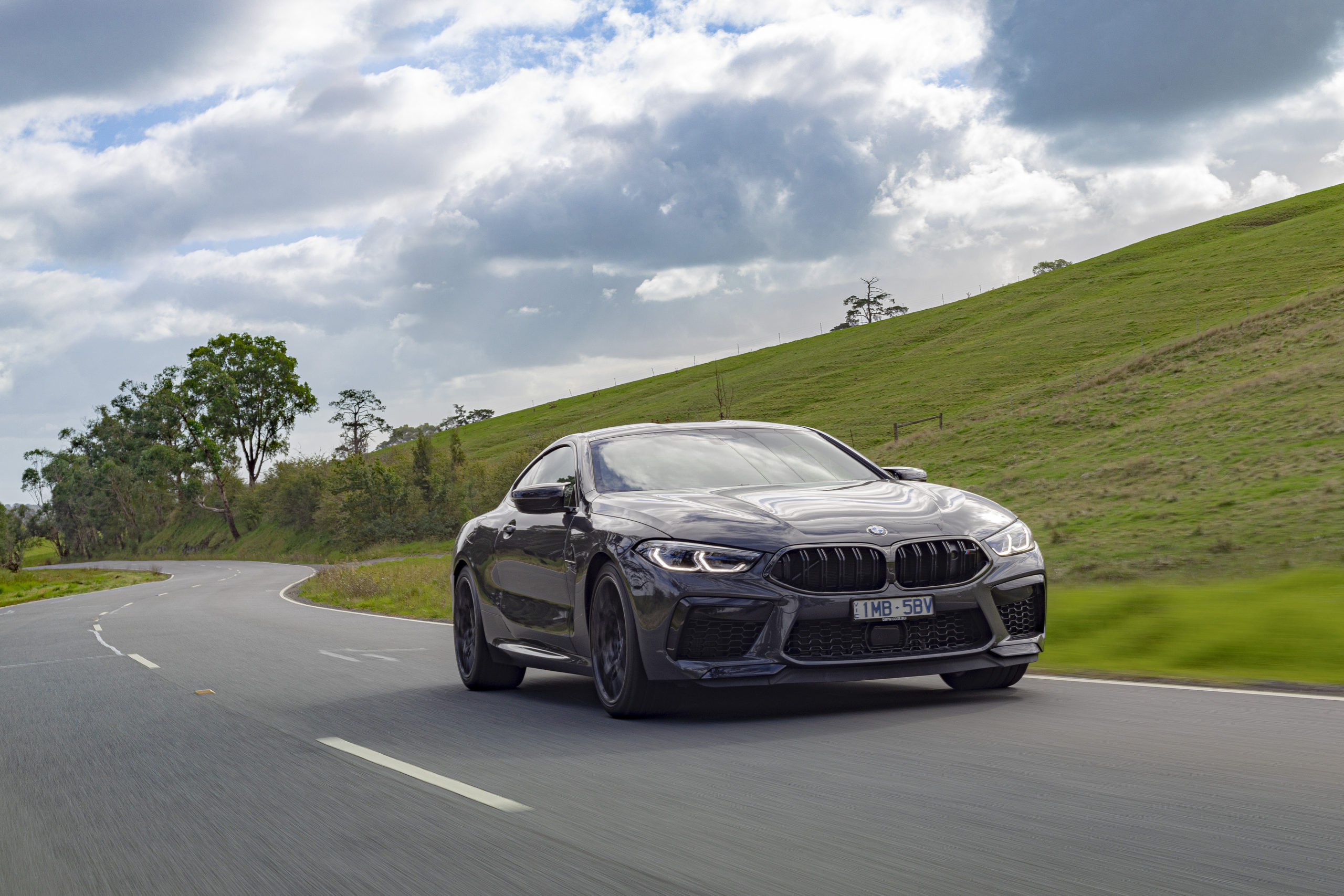
The brakes feature 395mm front rotors and 280mm discs on the rear, with special M compound pads. If they aren’t good enough you can option carbon ceramic braking hardware for $16,500; but that’s really only needed if you plan on doing regular track work.
The drive mode system offers excellent adjustability with individual settings for the engine response, steering feel, suspension stiffness as well as XDrive for Road, Sport and Track. You can even program your favourite combination with the ‘M Mode’ buttons on the steering wheel.
Where would you most like to drive it?
As I suggested above, BMW’s are best suited to smooth surfaces and so to really experience the best of the M8 Competition you need a racetrack. While a fast, flowing circuit like Phillip Island would seem best-suited to a big car like this, I’d prefer to go to Sandown Raceway because its combination of slow, technical corners and long straights would really put the M8 Competition to the test.
What’s the interior like?
The attention-to-detail is what really makes the M8 Competition interior so special. For example, the sports seats in our test car had five trim elements (various leathers and Alcantara) plus an illuminating ‘M8’ badge built into the headrest.
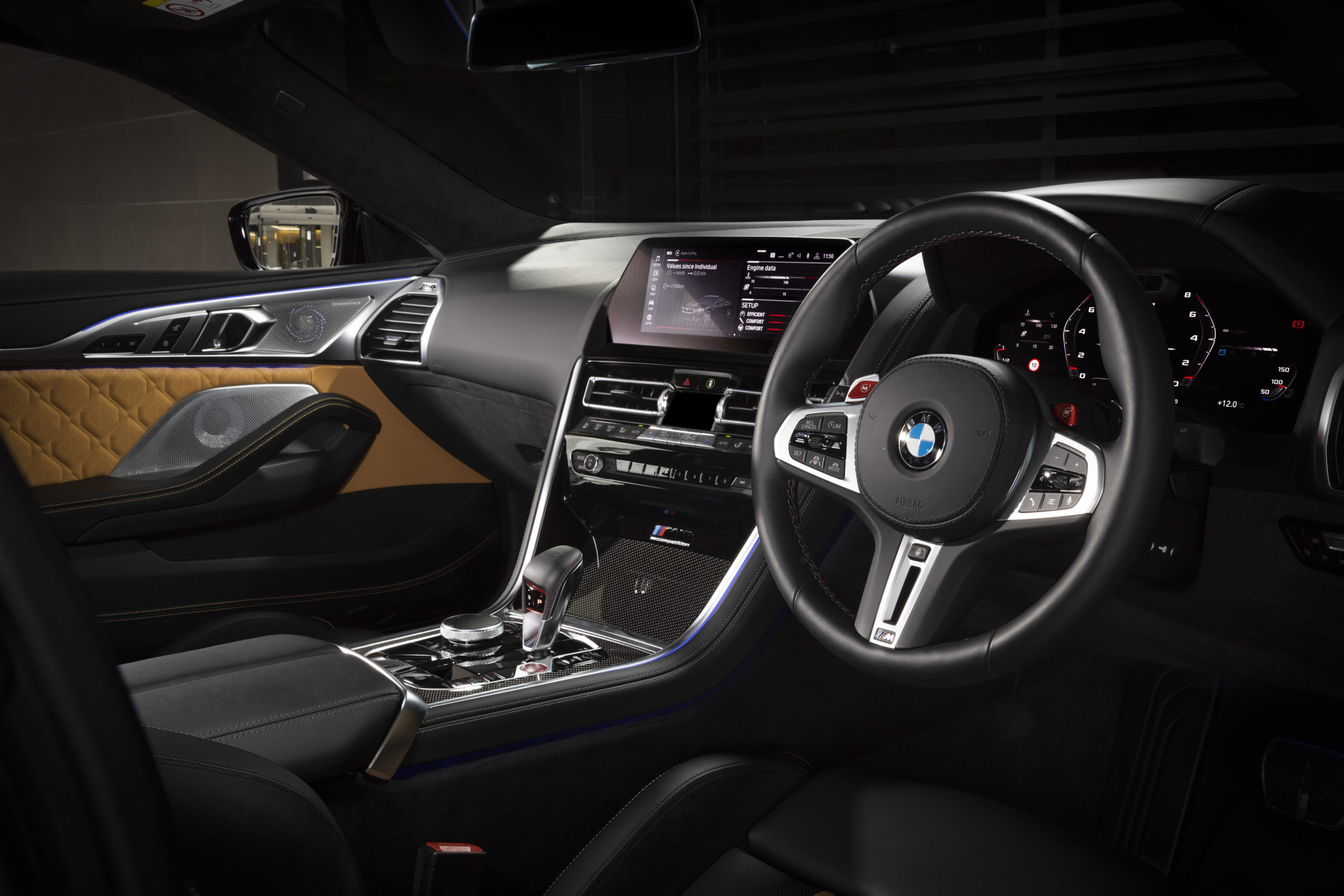
The extensive use of leathers and carbon fibre trim set the M8 apart from the rest of the 8-Series range, ensuring it feels like it belongs at the top of the line-up. It also helps the M8 find the right balance between sportiness and luxury.
Is it good value for money?
This is where the M8 Competition is at its weakest. It’s priced from $357,900 (plus on-road costs) which, for starters, is a significant $77,000 more than the M850i Coupe (from $280,900).
That also puts it well above the Aston Martin Vantage (from $299,950), Porsche 911 Carrera 4S (from $291,800) and Mercedes-AMG GT S (from $317,435), which means you’re paying a hefty premium for the BMW over some very impressive competition.
The only similar rival that’s more competitive is the Audi R8 V10 Quattro, which is priced from $395,000, but it’s a more extreme take on the sports car format with its mid-engine, two-seat layout.
Would I buy one?
It’s an extremely tempting car to park in your driveway. It looks sharp inside and out, has a fantastic engine and handles brilliantly so there’s a lot to like about the M8 Competition.
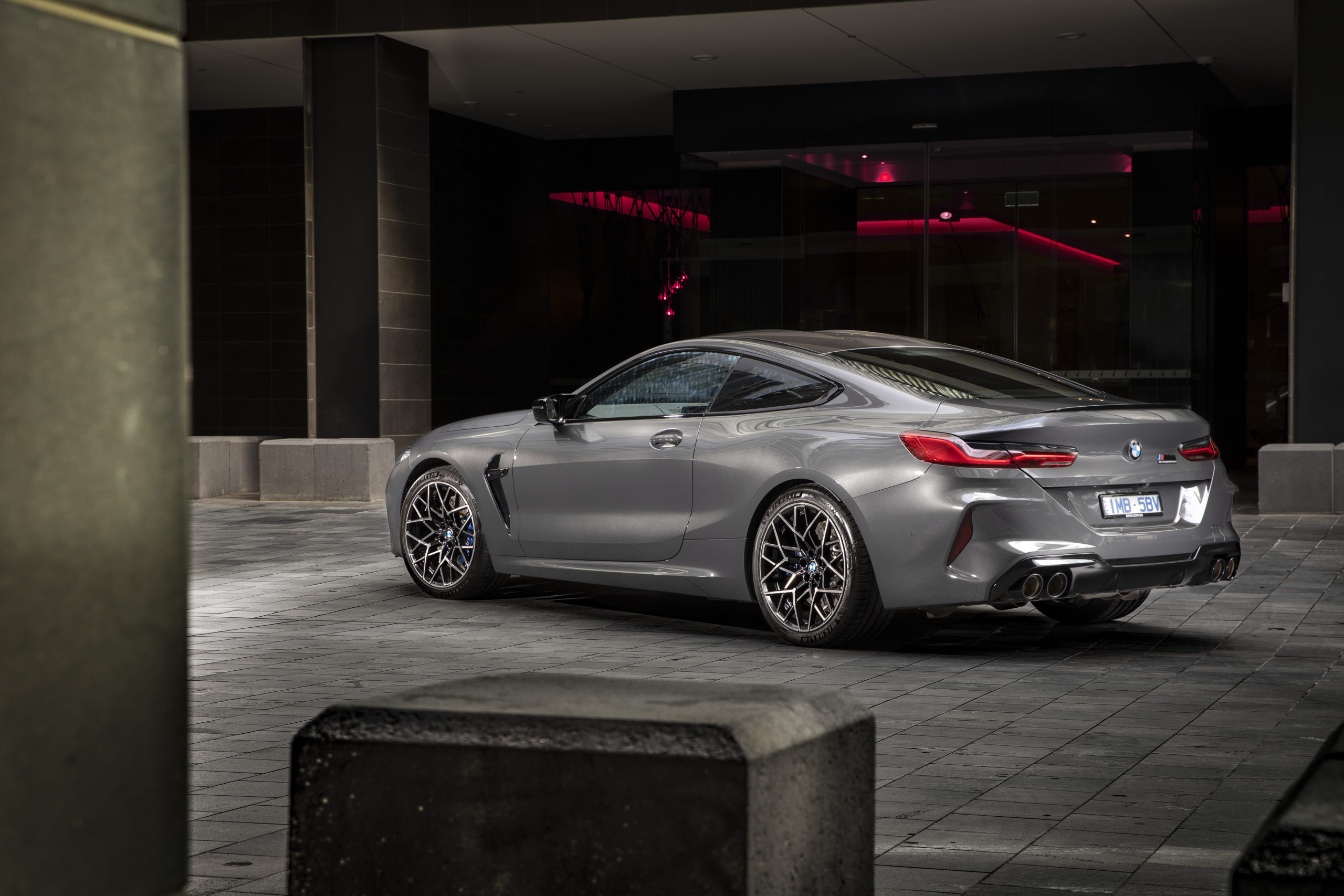
But the hefty asking price makes the cheaper but equally impressive M850i look like the better option. It may not be quite as quick or as razor sharp in the bends, but only by matters of degrees.
Either way, it’s great to see the 8-Series name return with substance.
2020 BMW M8 Competition Coupe price and specifications
| Price: | From $357,900 plus on-road costs |
| Engine: | 4.4-litre twin-turbo V8 petrol |
| Power: | 460kW at 6000rpm |
| Torque: | 750Nm at 1800-5600rpm |
| Transmission: | Eight-speed automatic, all-wheel drive |
| Fuel use: | 10.4L/100km |
| Wheels: | 20-inch alloys |
| Tyres: | 275/35 R20 front, 285/35 R20 rear |
| Length: | 4867mm |
| Width: | 2137mm |
| Height: | 1362mm |
| Weight: | 1960kg |
| 0-100km/h: | 3.2 secs (claimed) |







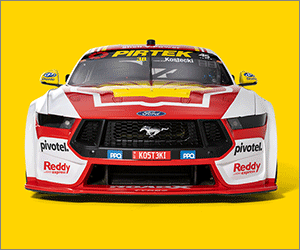





Discussion about this post